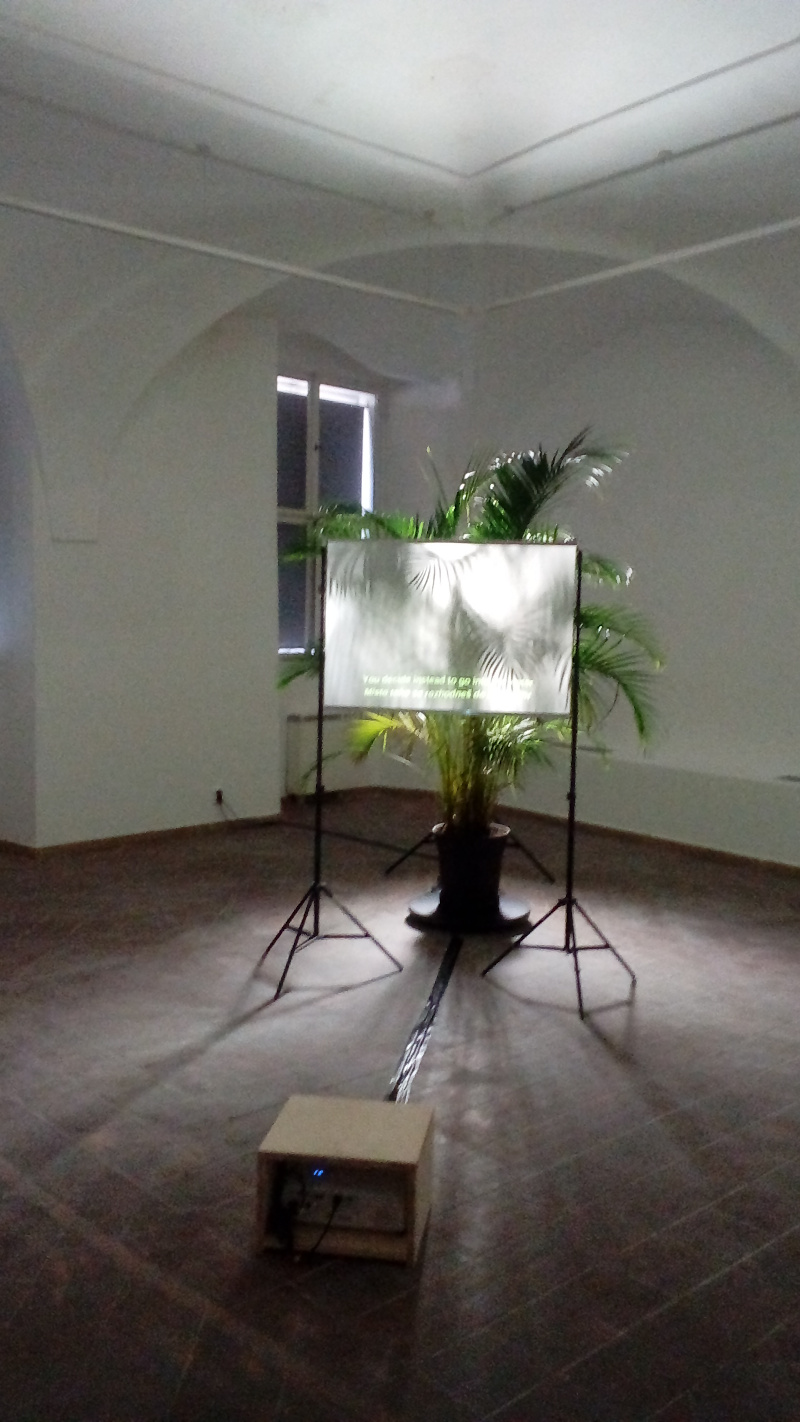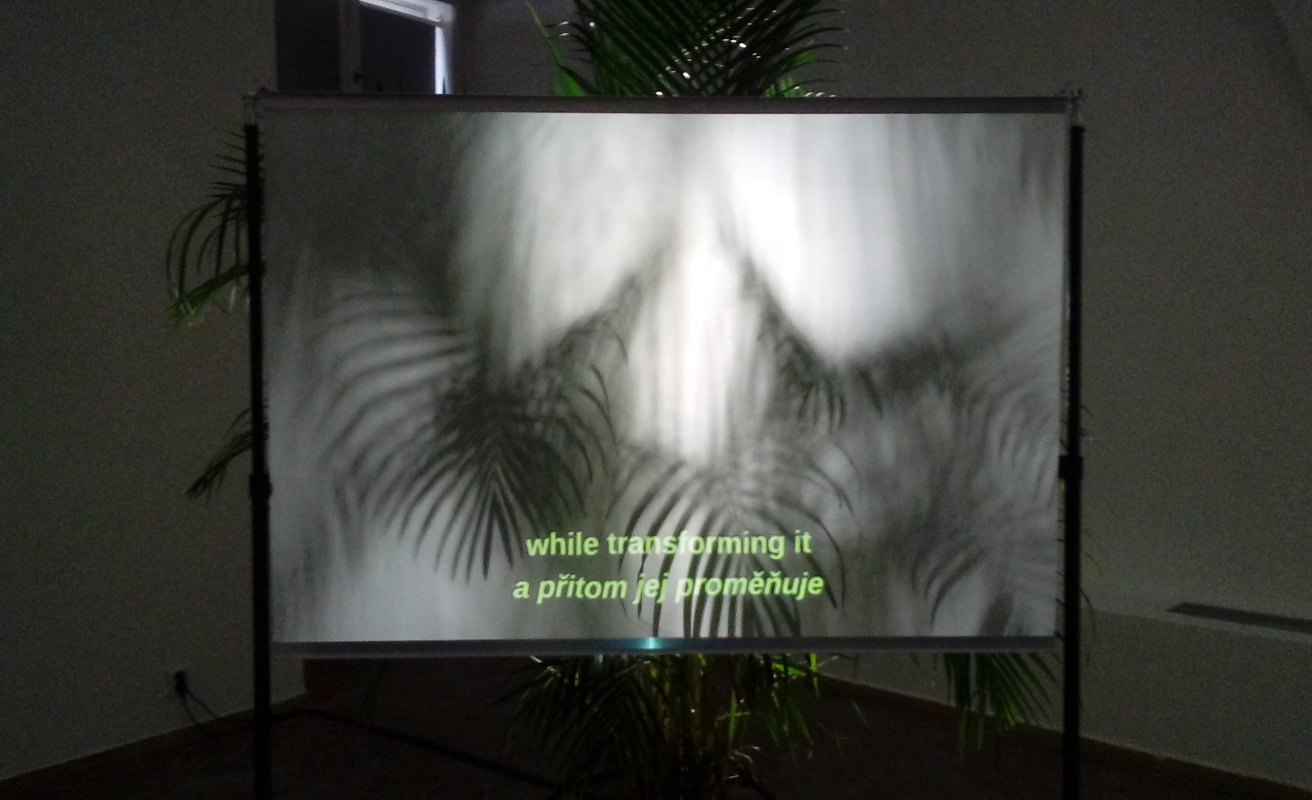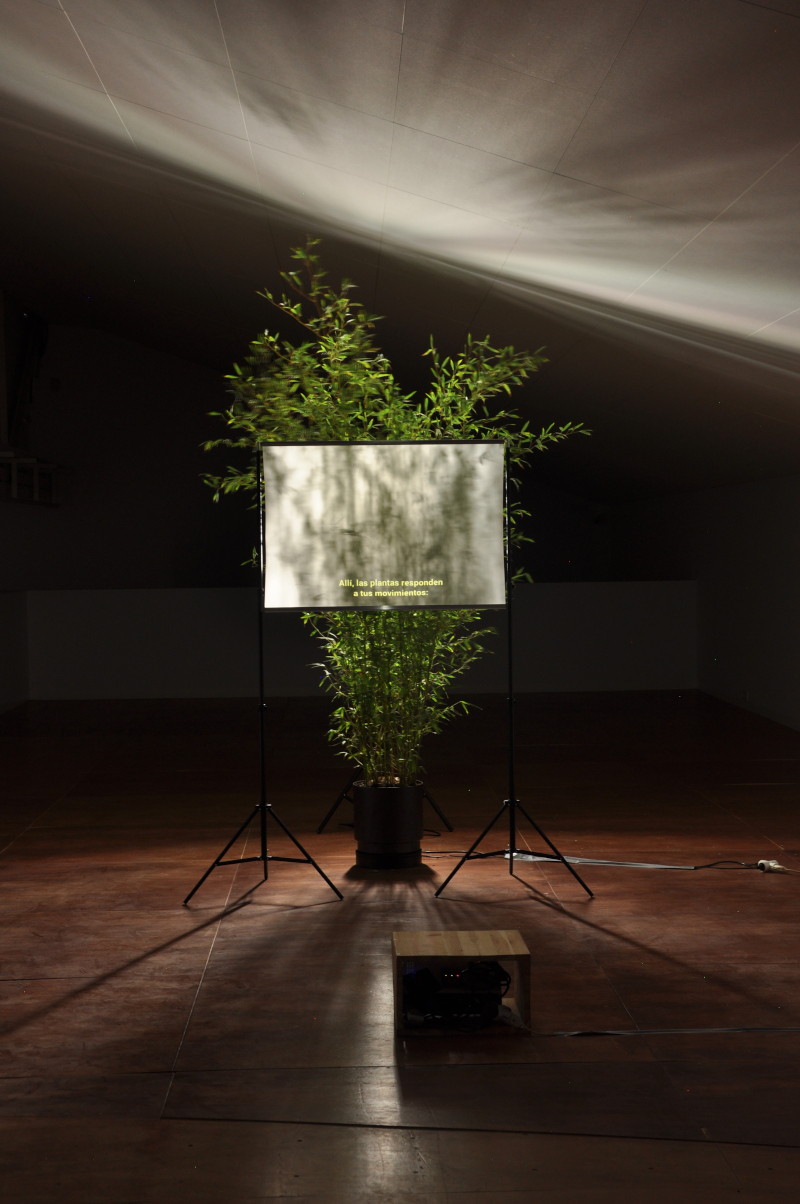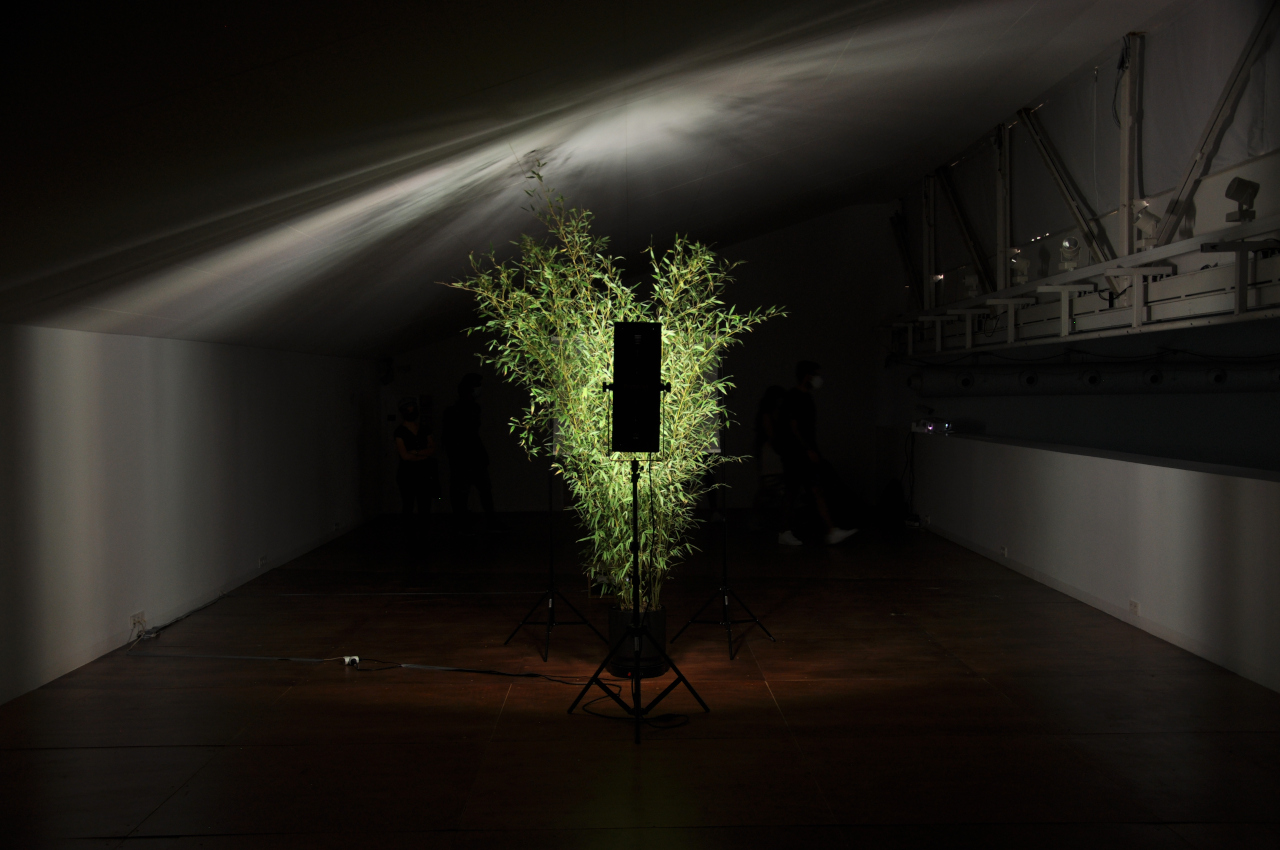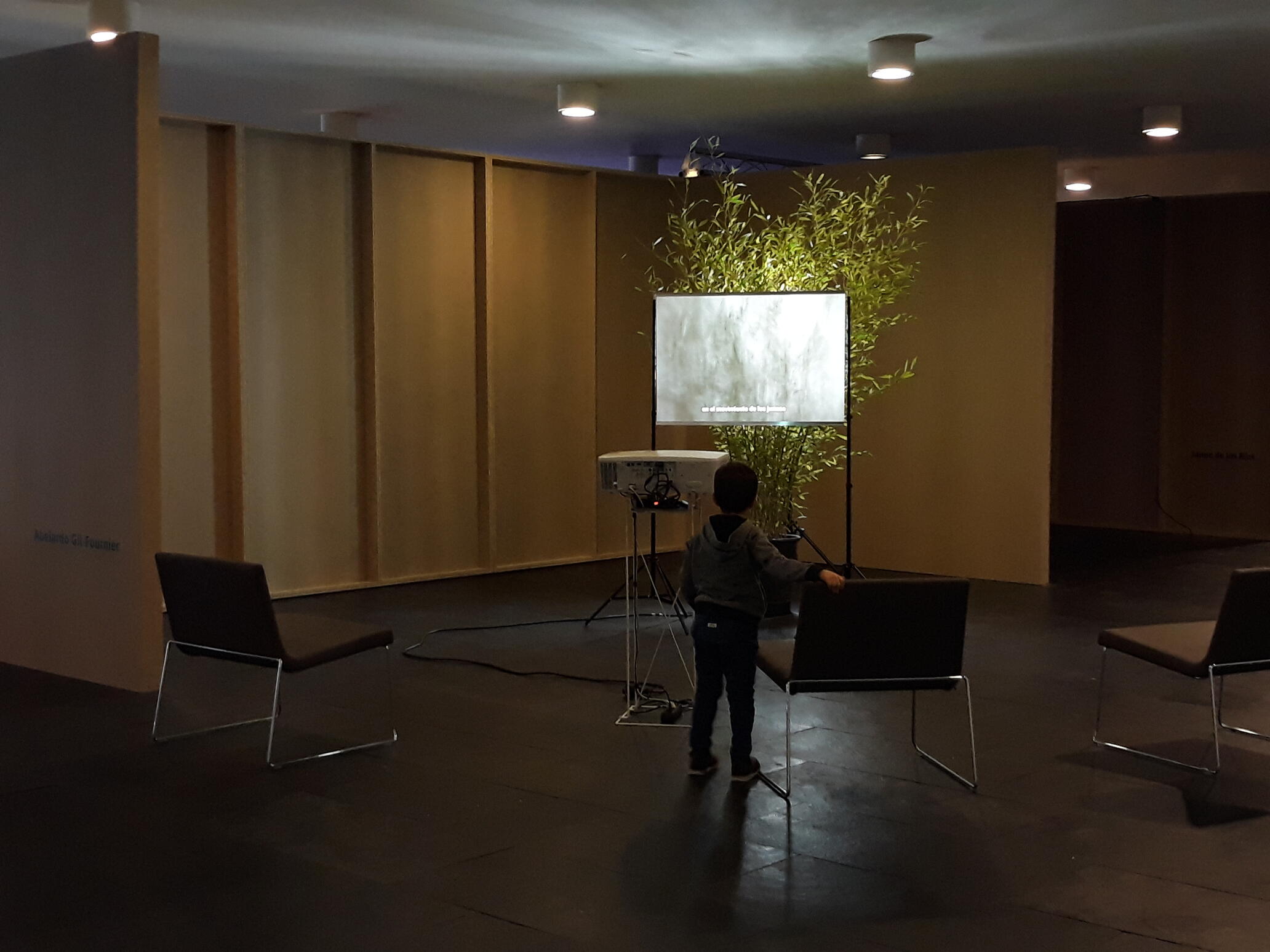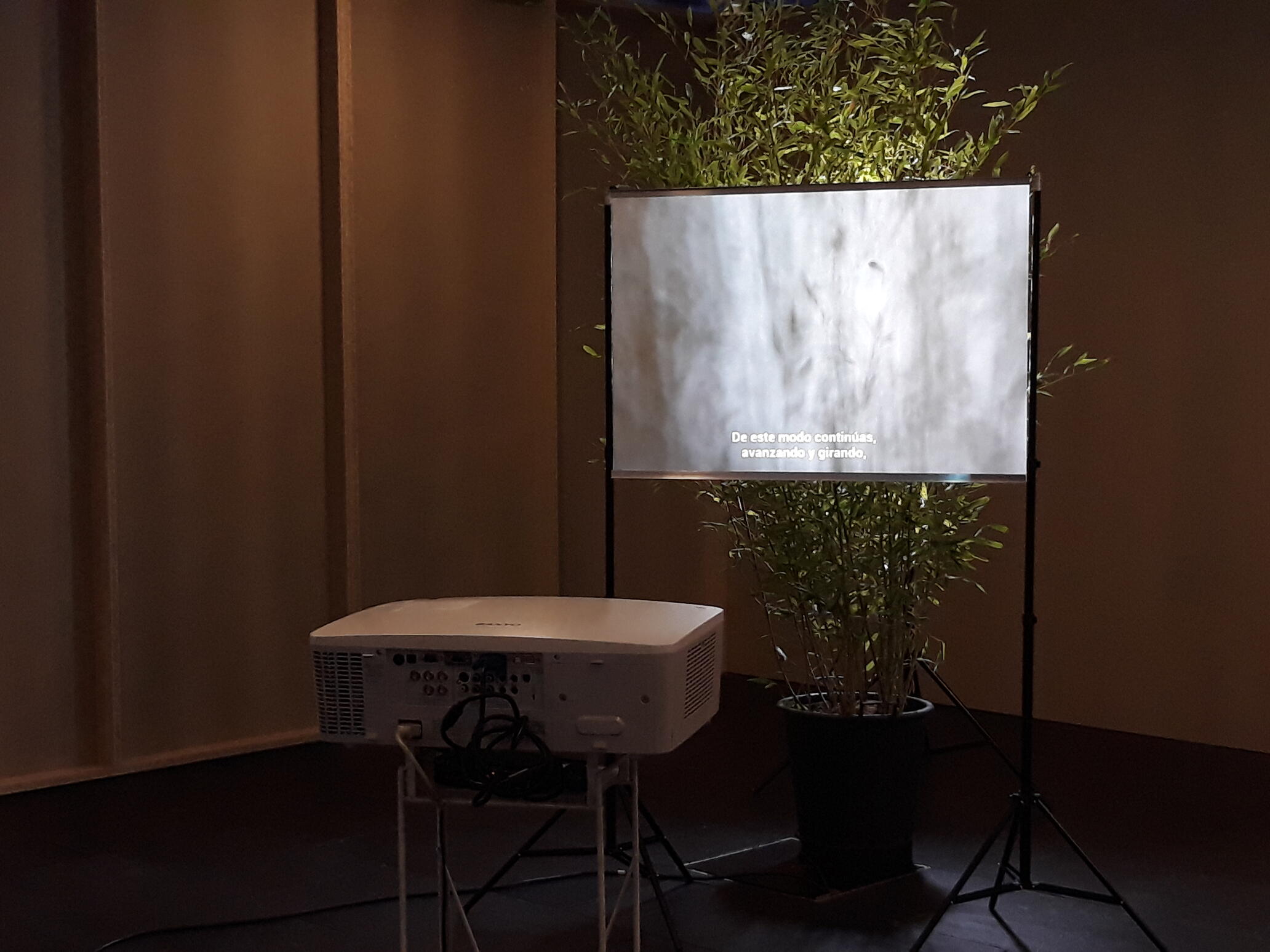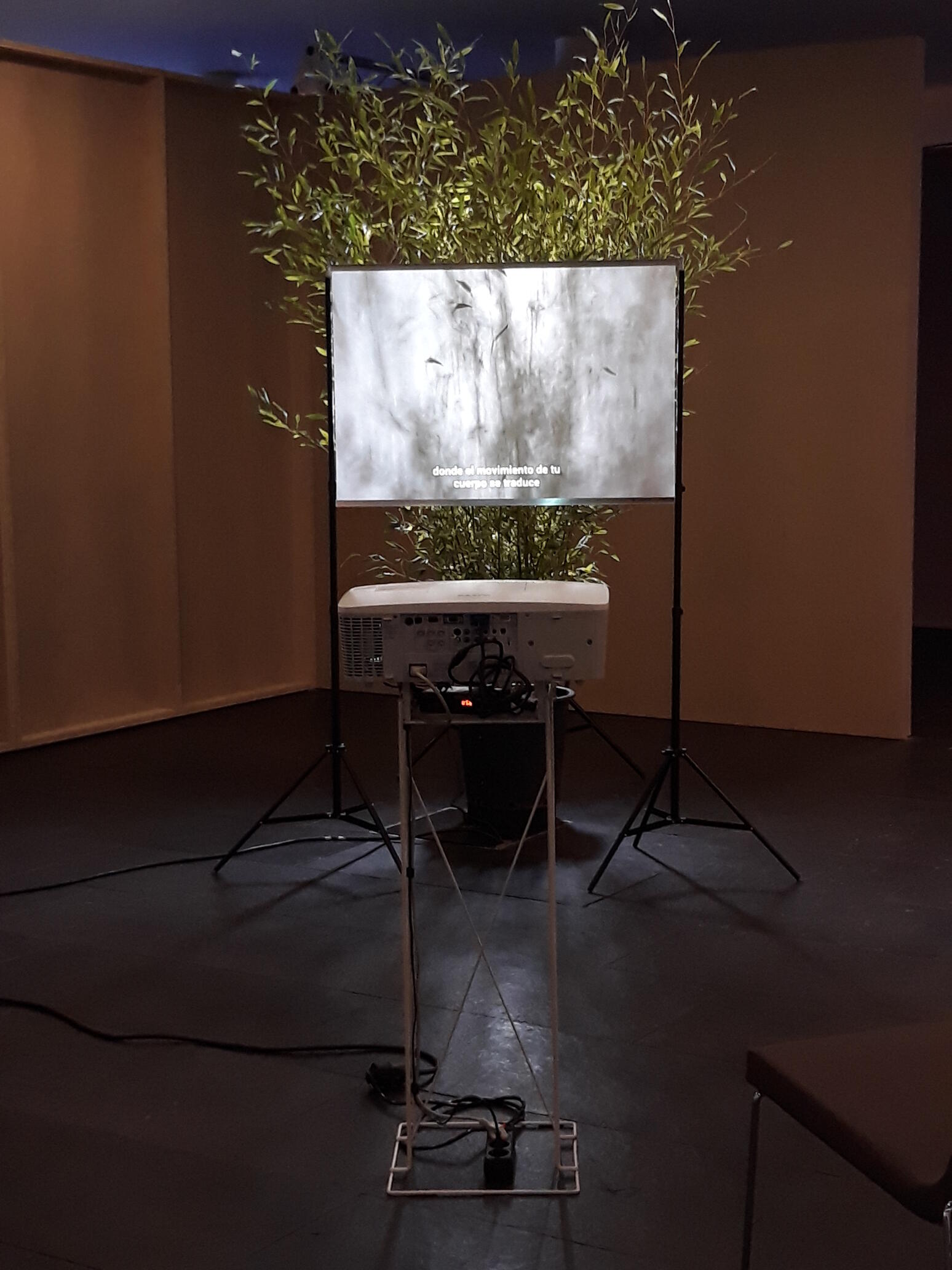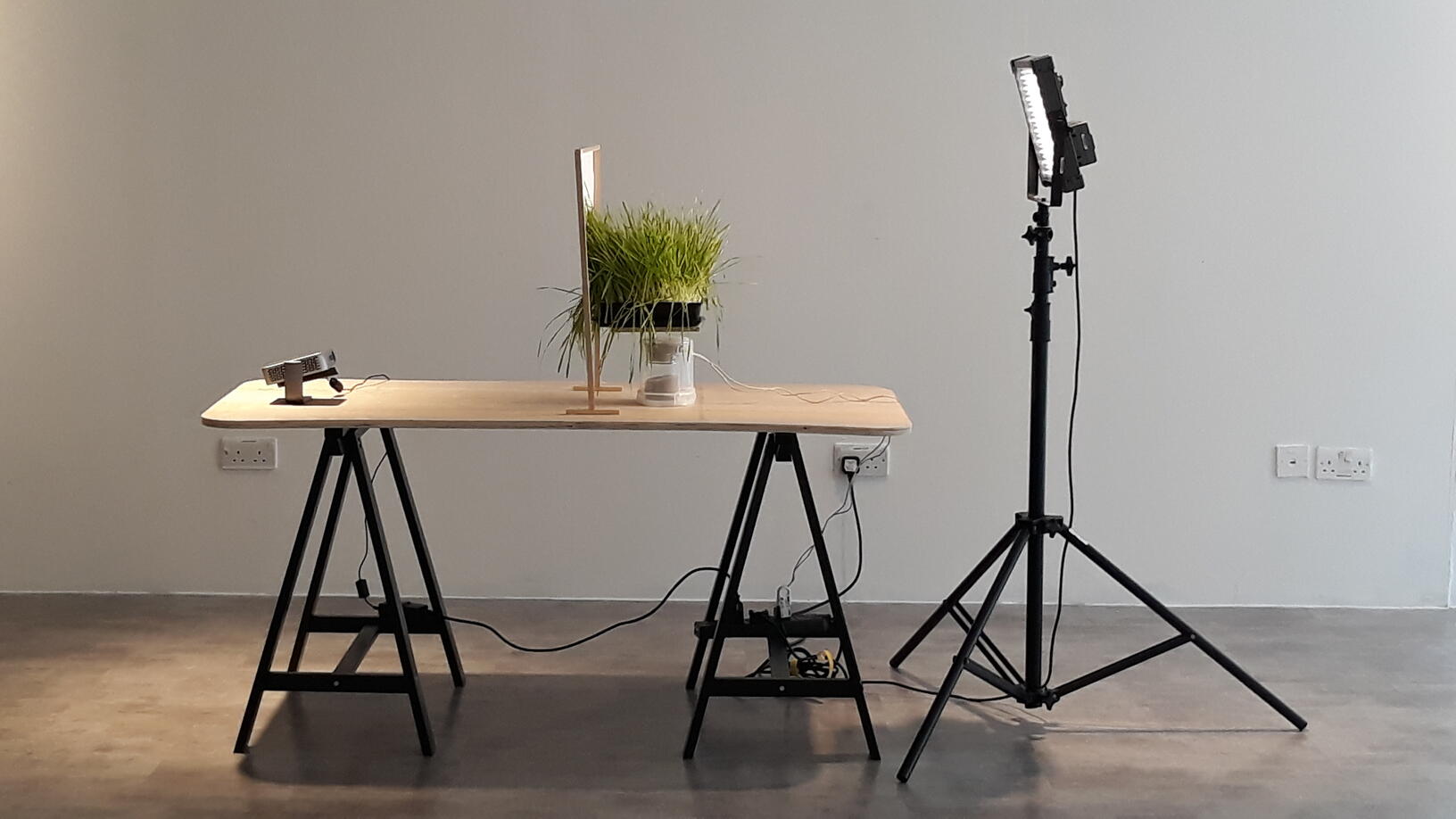The Quivering of the Reed
Installation. Plant or tree, beamer, DC motor, spot light and paper screen. Variable dimensions.
2019
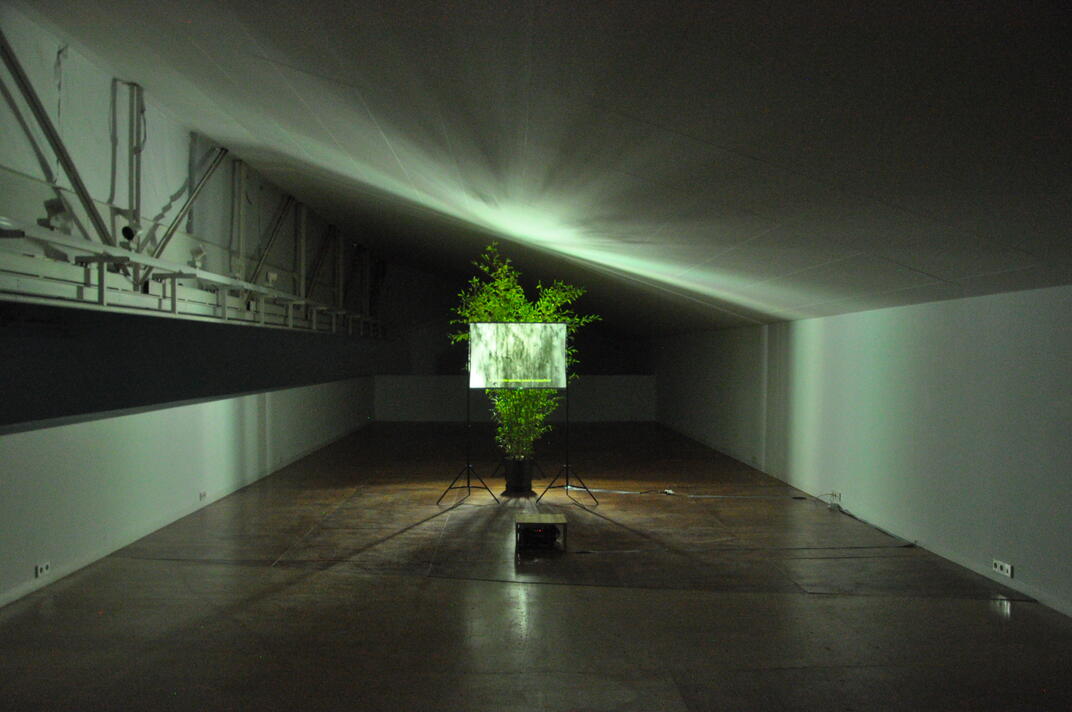
A tree on a rotating platform is the central element of The Quivering of the Reed. Standing between a source of light and a translucent paper sheet, the leaves of the rotating tree generate a film made up of shadows, lights and blur. In the installation, light sustains the tree, while it generates an ever-changing cinematic experience of moving images.
A sequence of subtitles is projected on the screen. They describe the images as if they had been filmed on a river, while recalling a quote by Andrei Tarkovsky: “Just as from the quivering of a reed you can tell what sort of current there is in a river, in the same way we know the movement of time in the shot”. The subtitles, however, suggest another double bind: the moving plant becomes the image, the moving image becomes the plant.
In the installation, 20th-century scientific practices meet early moving image cultures. The image-plant stands for an environmental entanglement: the living and the animated, surfacing as a mutual breath.
La vibración de los juncos es una instalación que combina prácticas científicas de comienzos del siglo XX con los primeros dispositivos de imagen en movimiento. El elemento central es un árbol que rota de forma continua entre un potente foco de luz, por un lado, y una pantalla de papel translúcido por el otro. A los ojos de quien mira, las hojas del árbol generan en la pantalla una película compuesta por sombras, luces y desenfoques.
Un proyector cierra el conjunto añadiendo unos subtítulos a ésta. Estos toman una frase de Andrei Tarkovsky como punto de partida: “Así, del movimiento de los juncos se puede reconocer el carácter de la corriente del río, la presión del agua. Del mismo modo, el proceso vital que la toma reproduce en su movimiento transporta el movimiento del tiempo”. Sin embargo, el texto proyectado invierte el sentido inicial de la cita y sugiere en su lugar un tiempo que viaja de la imagen al mundo.
En La vibración de los juncos imagen y formación vegetal se entrelazan en la experiencia de quien mira. Y lo hacen poniendo el énfasis en la importancia de los mecanismos que han posibilitado la expansión y la circulación de imágenes. Mecanismos como la rotación automática, que está en la base de la imagen cinematográfica. ¿Reproduce la imagen el proceso vital de las cosas, o es más bien el tiempo de la imagen lo que se proyecta al mundo fuera de esta?
Selected shows:
| 2025 | Por el aire se extiende, una verde ceniza. Galería Ángeles Baños |
| 2021 | Fotograf Festival / Earthlings / The Metabolic Perspective. Gallery AMU (Prague) |
| 2020 | Naturalezas Desplazadas. PROYECTOR 2020 / El Instante Fundación |
| 2019 | Project Room, 948 Merkatua. Baluarte (Iruña/Pamplona) |
Selected publications:
| 2024 | Mario Gutiérrez Cru, Videoarte, no cinemanormativo Estudios Curatoriales (19) |
| 2020 | Abelardo Gil-Fournier, La vibración de los juncos. Imagen, tiempo y terraformación Accesos 3 arte, humanidad, tecnología, naturaleza |

